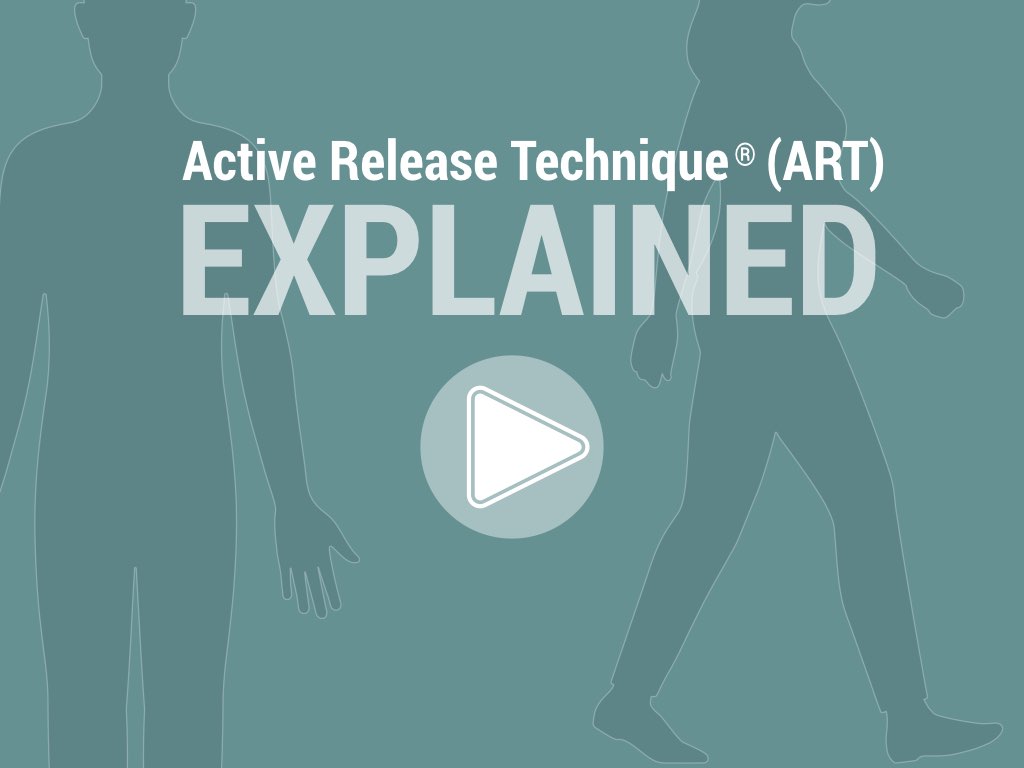Active Release Technique Near Me
What is Active Release Technique?
Active Release Technique (ART) is a patented soft tissue movement-based massage technique that treats problems with muscles, tendons, ligaments, fascia and nerves. Many conditions can be resolved quickly and permanently with Active Release Technique (ART) including back/shoulder pain, tennis elbow, sciatica, shin splints, carpal tunnel syndrome, plantar fasciitis, knee problems and more. These conditions all have one important thing in common: they are often a result of overused muscles.
Interested in learning more? Contact Release PT today.
How do overuse conditions occur?
Over-used muscles are caused by acute conditions (pulls, tears, collisions, etc.), the accumulation of small tears, or lack of oxygen. Each of these factors can cause your body to produce scar tissue, which can bind tissues that need to move freely. This scar tissue can result in muscle weakness, tendonitis, trapped nerves, reduced range of motion, pain, tingling, or numbness. Your physical therapist may use Active Release Technique (ART) to treat this problematic scar tissue by combining precise, directed tension with very specific patient movements.
How does Active Release Technique work?
Active Release Technique (ART) in physical therapy is a specialized treatment method focusing on relieving tissue tension by removing adhesions that develop in tissues due to overload and repetitive use. Here's how it works:
- Identification of Problem Areas: The therapist examines the patient's muscles, tendons, ligaments, fascia, and nerves to identify areas with abnormal or restricted movement.
- Manual Tension: The therapist applies manual pressure and Active Release technique massage to the affected area. This is done with hands, where the therapist uses movements to apply tension to the muscle or tissue.
- Patient Movement: Simultaneously, the patient is asked to move the affected body part through a range of motion. This movement under tension helps to stretch and release the tightness.
- Breaking Down Adhesions: The combination of manual pressure and patient movement helps break down scar tissue and adhesions in muscles and surrounding tissues.
- Restoring Normal Function: By releasing these restrictions, ART restores normal tissue texture, tension, and movement, alleviating pain and improving performance.
What is Active Release Technique (ART) treatment like?
Every Active Release Technique (ART) session is actually a combination of examination and treatment. The Active Release Technique (ART) provider uses his or her hands to evaluate the texture, tightness and movement of muscles, fascia, tendons, ligaments and nerves. Abnormal tissues are treated by combining precisely directed tension with very specific patient movements. These treatment protocols – over 500 specific moves – are unique to Active Release Technique (ART). They allow providers to identify and correct the specific problems that are affecting each individual patient. Active Release Technique (ART) is not a cookie-cutter approach.
What is Active Release Technique (ART) treatment like?
Every Active Release Technique (ART) session is actually a combination of examination and treatment. The Active Release Technique (ART) provider uses his or her hands to evaluate the texture, tightness and movement of muscles, fascia, tendons, ligaments and nerves. Abnormal tissues are treated by combining precisely directed tension with very specific patient movements. These treatment protocols – over 500 specific moves – are unique to Active Release Technique (ART). They allow providers to identify and correct the specific problems that are affecting each individual patient. Active Release Technique (ART) is not a cookie-cutter approach.
Conditions treated by Active Release Technique
ART is especially effective for conditions related to overuse or repetitive strain, like carpal tunnel syndrome, tennis elbow, or runner's knee. ART sessions at Release PT are highly individualized, with treatments and movements tailored to each patient's specific condition.
Benefits of Active Release Technique
Some of the key benefits of ART are:
- Pain Relief: ART helps in reducing pain associated with soft tissue injuries. By breaking down scar tissue and adhesions, it alleviates chronic pain and improves mobility.
- Improved Flexibility and Range of Motion: The technique works by stretching and releasing tight muscles and fascia, which improves flexibility and range of motion.
- Increased Blood Flow: ART treatments enhance blood circulation to the affected areas, promoting faster healing and recovery.
- Breakdown of Scar Tissue: Over time, muscles and tendons can develop scar tissues, which cause pain and stiffness. ART breaks down scar tissues, restoring normal tissue function.
- Prevention of Injuries: By maintaining soft tissue health, ART prevents the development of injuries due to overuse or repetitive stress.
- Improved Athletic Performance: Many athletes use ART to improve their performance. It helps in maintaining optimal muscle function, for peak athletic performance.
- Treatment of Specific Conditions: ART treats specific conditions like carpal tunnel syndrome, back pain, shin splints, shoulder pain, piriformis syndrome, sciatica, plantar fasciitis, knee problems, and tennis elbow.
- Non-Invasive Treatment: As a non-invasive therapy, ART doesn't require surgery or medication, making it a preferred choice for those looking for natural treatment methods.
- Customized Treatment: ART is tailored to individual needs based on specific symptoms and conditions of each patient, ensuring an effective treatment.
- Quick Results: Many patients experience immediate relief after an ART session, with significant improvements seen in a short amount of time.
Who can benefit from Active Release Technique?
Active Release Technique (ART) benefits athletes and those with chronic pain or injuries. Here's who can benefit from ART:
- Athletes: From amateurs to professionals, athletes benefit from ART. It helps treat injuries from repetitive strain and overuse, improving flexibility, and enhancing overall athletic performance.
- Individuals with Repetitive Strain Injuries: People suffering from repetitive strain injuries, like carpal tunnel syndrome, tendinitis, or tennis elbow, find relief through ART. It addresses the fundamental cause of these conditions by breaking down scar tissue.
- Office Workers: Those who spend long hours at a desk, suffering from neck and shoulder tension, back pain, or wrist issues, can benefit from ART. It alleviates discomfort from prolonged sitting and computer use.
- Post-Surgery Patients: Patients recovering from surgeries, especially with the musculoskeletal system, may find that ART reduces scar tissue and improves mobility.
- People with Chronic Pain: ART is effective for chronic pain conditions, related to soft tissues, by releasing tight muscles and improving blood flow.
- Weekend Warriors: Casual exercisers who may not be in peak physical condition but engage in sporadic, intense physical activity can use ART to prevent or treat injuries.
- Aging Individuals: As people age, they experience increased stiffness and reduced mobility. ART can help maintain flexibility and reduce discomfort.
- Those with Acute Injuries: People suffering from acute soft tissue injuries use ART to expedite the healing process and reduce scar tissue.
- People with Specific Conditions: Conditions like plantar fasciitis, back pain, and shin splints can be managed with ART.
- Anyone Seeking Alternative Therapies: If you’re looking for non-invasive, drug-free treatment options for pain and mobility issues, explore ART as a potential solution.
What should I expect during an Active Release Technique session?
Each session can be slightly different, but here are some of the things that you can expect.
Initial Assessment: The practitioner will assess your symptoms and medical history, and perform a physical examination.
Identification of Affected Areas: Using hands-on techniques, the practitioner will locate areas of tightness or restriction in muscles, fascia, tendons, ligaments, or nerves.
Active Participation: You may be asked to move certain body parts while the practitioner applies pressure to treat targeted tissues.
Targeted Manual Therapy: Specific movements, unique to ART, are used to break up adhesions and scar tissue and restore normal function.
Sensation and Discomfort: You might experience discomfort similar to deep tissue massage, based on the treatment area and condition severity.
Session Duration: All sessions at Release PT last 55 minutes. Within that session, we may do multiple different types of treatments or therapies. ART usually lasts about 15-30 minutes within that full session. Timing depends on the specific treatment needs of each patient.
Immediate Relief and Advice: Many experience immediate relief; the practitioner may offer post-treatment advice on exercises or lifestyle changes.
Personalized Treatment: The session is customized to your condition and needs.
How long does Active Release Technique take to work?
The effectiveness of Active Release Technique (ART) and the time it takes to work varies. Many patients experience immediate relief after the first session, but complete resolution often requires multiple sessions, with acute conditions needing fewer sessions and chronic conditions requiring more, over several weeks.
How much does Active Release Technique cost?
Active Release Therapy can cost anywhere from $150-$300 per session. At Release PT, we incorporate it into your session at no additional cost.
Is Active Release Technique covered by insurance?
At Release Physical Therapy, we are an out-of-network provider. So active release will be charged to your insurance company under manual therapy, but you will be reimbursed by your insurance company based on your out-of-network coverage.
Is Active Release Technique the same as myofascial release?
Active Release Technique (ART) and Myofascial Release differ:
- Technique: ART uses specific patient movements to target muscles, tendons, ligaments, fascia, and nerves, usually involving over 500 different movements. Myofascial Release focuses on releasing tension in the fascia through sustained pressure and stretching.
- Patient Participation: ART requires active movements from the patient, while Myofascial Release is more passive, with the therapist manipulating the fascia.
- Focus: ART is more targeted, addressing specific issues like adhesions and nerve entrapments. Myofascial Release is broader, relieving generalized tension and pain.
- Session Duration: ART treatments last around 15-30 minutes out of the full 55-minute multi-treatment session. Myofascial Release sessions can vary in length, involving longer treatment times.
While both techniques treat soft tissue problems, they differ in their methods, patient involvement, and specific focus areas.
Can Active Release Technique Help Piriformis Syndrome?
Active Release Technique (ART) can be beneficial for Piriformis Syndrome due to:
- Non-Invasive Approach: ART provides a non-surgical, non-injection alternative for treatment.
- Scar Tissue Breakdown: ART helps break down scar tissue in the piriformis muscle, reducing pain and improving flexibility.
- Muscle Flexibility Improvement: The technique increases the flexibility of the piriformis muscle, alleviating nerve pressure.
- Tension Reduction: ART releases tension in the piriformis muscle.
- Restoration of Normal Function: By targeting specific issues, ART restores normal function and relieves symptoms.
- Customized Treatment: ART treatments specifically address piriformis muscle issues. ART can help treat sciatica in specific but limited ways. Piriformis Syndrome and Sciatica are different conditions: Piriformis Syndrome involves the piriformis muscle spasming and affecting the sciatic nerve, while sciatica is pain along the sciatic nerve path, and due to spinal issues. Active Release Technique (ART) can treat Piriformis Syndrome by addressing muscle spasms and can help with Sciatica when muscle tightness is a contributing factor. However, for Sciatica caused by spinal problems, ART's effectiveness is limited.
Certified ART Providers at Release Physical Therapy
All physical therapists at Release Physical Therapy DC are certified full body Active Release Technique (ART) provider. Our highly skilled staff works with patients one-on-one to develop a treatment plan that may incorporate ART along with additional therapeutic techniques. Many conditions can be resolved quickly and permanently with Active Release Technique (ART). Contact Release Physical Therapy to learn more about ART or schedule an appointment today.
Certified ART Providers at Release Physical Therapy
All physical therapists at Release Physical Therapy DC are certified full body Active Release Technique (ART) provider. Our highly skilled staff works with patients one-on-one to develop a treatment plan that may incorporate ART along with additional therapeutic techniques. Many conditions can be resolved quickly and permanently with Active Release Technique (ART). Contact Release Physical Therapy to learn more about ART or schedule an appointment.








